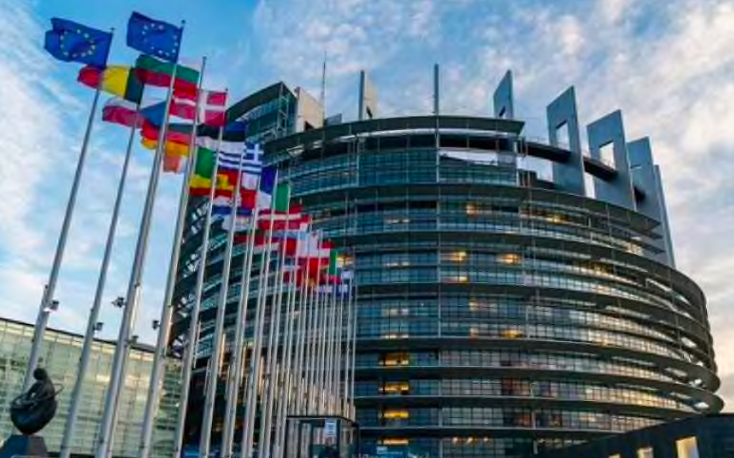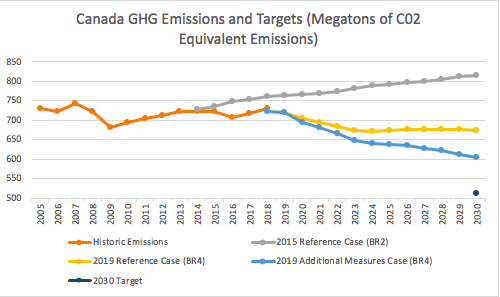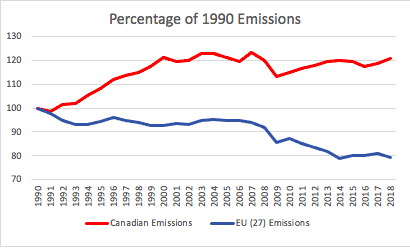The EU has a Road Map for Canada’s Post-Covid Climate Policy
In a time of uncertainty, we need economic and fiscal planning to guide Canada beyond the pandemic that includes intelligent climate change policy. The European Union offers a best-practices model.

Sylvan Lutz and Kevin Page
October 27, 2020
The Chinese philosopher Confucius said, “A man who does not plan long ahead will find trouble right at his door.” We are living in trying times. To their credit, public health experts warned us about the likelihood of a global pandemic. It arrived, and the world was not ready. Climate change scientists have given us their warning.
Bill Gates has noted that if you want to understand the likely damage from missed climate change targets, look at COVID-19 and spread the pain out over longer periods of time. Without real progress against climate change we could see similar or greater estimated mortality rates by the middle of the century. Economic loss estimates from climate change could be like having a COVID pandemic every decade.
In this period of incredible uncertainty, Canada needs more planning, not less. We need a plan to guide the country through the second wave of contagion. We need an economic and fiscal plan — with fiscal anchors — to guide Canada through and beyond the COVID-19 pandemic. We need a plan to meet our 2030 and 2050 climate change targets.
Plans are required to manage uncertainty. The private sector will frame decisions to invest and restructure based on long-term perspectives. The Fall 2020 International Monetary Fund Global Financial Stability Report highlights research based on corporate data over the past two decades indicating that financially constrained firms will reduce their environmental performance. A strong government plan is essential to increase awareness of climate risks, and facilitate the change in consumer, investor and corporate actions to a low-carbon environment.
To their credit, the current Liberal government has paid more attention to the threat of climate change than any previous Canadian government. In the government’s recent Speech from the Throne, they dedicated time and space to climate change and reiterated Prime Minister Justin Trudeau’s promises to “bring forward a plan to exceed Canada’s 2030 climate goal,” and “legislate Canada’s goal of net-zero emissions by 2050.”
These are laudable goals. The problem is that Canada has missed every climate target it has ever set and is not even on track to meet its 2030 commitments let alone the 2050 promise, which has created a pre-existing credibility gap.
Under the Paris agreement, the current government has committed to the Harper era targets to limit GHG emissions (in carbon dioxide equivalent) to 30 percent below 2005 levels by 2030.
Environment and Climate Change Canada’s models show that we are far from meeting our targets. With our current policies, Canada has a gap between the projected emissions and the climate target of 77 megatons last year. At this rate, by 2030 we will have only reduced emissions by about 19.4 percent from 2005 levels. If other countries were to follow this path, the scientists say we will have a world with more floods, fires, droughts and hurricanes and with less Arctic sea ice, permafrost and biodiversity.
Chart 1
Canada GHG Emissions and Targets (Megatons of C02 Equivalent Emissions)

Source: Environment and Climate Change Canada
The 2019 Reference Case projects GHG emissions based on federal, provincial, and territorial policies and measures those that were in place as of September 2019. The 2019 Additional Measures Case considers all federal, provincial, and territorial policies and measures from the Reference Case as well as those that have been announced but not yet fully implemented as of September 2019.
The European Union has adopted successful frameworks that Canada can learn from. While Canada’s GHG emissions rose more than 20 percent between 1990 and 2018, the EU has cut emissions by 25 percent over the same period.
Chart 2
Comparing Emissions: Canada and EU

Sources: Natural Resources Canada; Environment and Climate Change Canada; European Environment Agency
To meet their targets, the EU has taken an approach of combining carbon pricing in certain sectors and regulations in others to make the transition to carbon-neutral a net economic benefit. A key feature of their plan is clear, predictable and obtainable targets so that industry may function in an atmosphere of certainty and grow the economy while reducing emissions. Another is clear and public reviews of their climate targets that result in more and more ambitious targets as deemed feasible.
The European Commission has proposed increasing its 2030 target from their Paris commitment of 40 percent to 55 percent below 1990 levels. Europe is using the COVID crisis as an opportunity to speed the transitions to a green and digital economy outlined in the European Green Deal. They also focus on a Just Transition, ensuring that total emissions are lowered in an economically efficient way while fossil fuel-producing states are supported through infrastructure improvements and retraining.
At this juncture, the safe bet is that the early-mover economic advantage related to critical green investments in technology and infrastructure will go to the EU.
A transparent, predictable and long-term plan for carbon price increases provides industry with incentives and time to react. Most importantly, it ensures that high-carbon polluters are paying to mitigate the costs they add to society. Research from Canada’s Parliamentary Budget Office (PBO) and the IMF shows that by increasing the pricing of carbon, the costs of climate mitigation between now and 2030 have a small impact on real GDP (a reduction of 0.06 to 0.08 in annual real GDP growth; PBO projections made pre-COVID-19).
Carbon pricing is a controversial subject in Canada because a number of provinces rely importantly on fossil fuel production. Like the EU, Canada should take a climate justice approach. The federal government will spend about $250 billion in direct fiscal supports in 2020-21 (plus additional liquidity resources) to help Canadian households and businesses stay safe and secure during the pandemic. Imagine the positive difference we could make if we spent $125 billion over the next ten years to transform industries, infrastructure, technology and labour to a low-carbon reality?
The recent Speech from the Throne attempts to move climate policy forward by launching a wide array of initiatives (many of them very good) including retrofitting homes and buildings, investing in reducing the impact of climate-related disasters, helping deliver more transit and active transit options, and making zero-emission vehicles more affordable.
However, the government’s commitments in the throne speech suffer from the same problem Canada’s other climate commitments: they are vague, lack specific targets, funding commitments and a timeline required to meaningfully limit Canada’s GHG emissions.
Europe is showing us the way. Canada needs a combination of a higher carbon price, tough regulations, historic new public investments in green infrastructure, R&D in low emissions technology, and supports for workers to help transition our economy to a more sustainable and resilient future.
The legendary American journalist Edward Murrow said “Difficulty is the excuse history never accepts.” We need a good climate change plan. If we get it right, it will both lead our post-COVID19 economic recovery efforts and help ensure we meet our international commitments on climate change.
Sylvan Lutz is an undergraduate economics student at the University of Ottawa.
Kevin Page is the President of the Institute of Fiscal Studies and Democracy at the University of Ottawa, former Parliamentary Budget Officer and a contributing writer for Policy Magazine.
